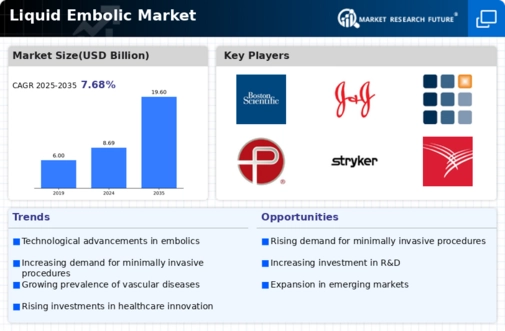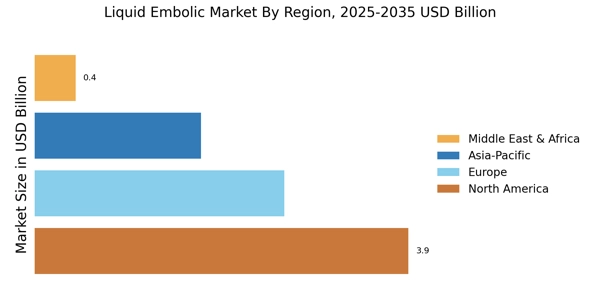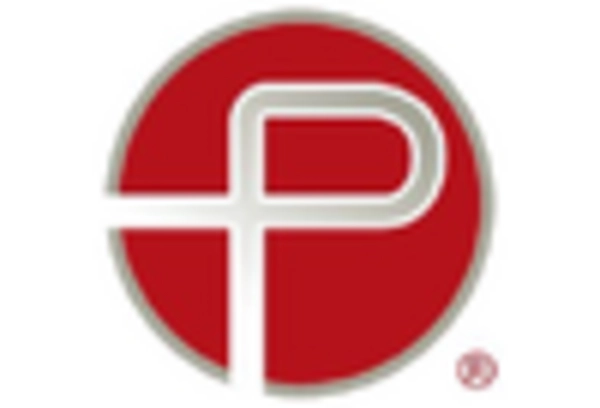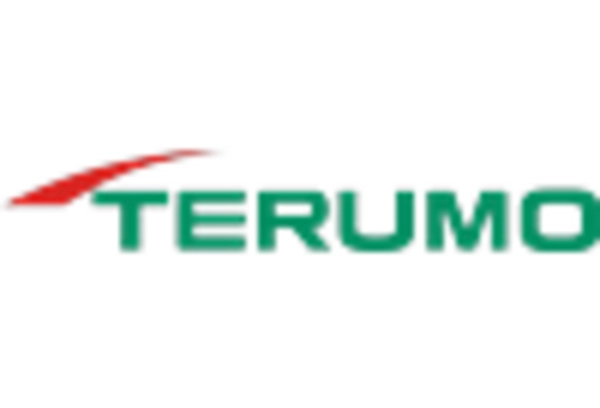Increasing Prevalence of Vascular Diseases
The rising incidence of vascular diseases, including arteriovenous malformations and aneurysms, is a primary driver for the Liquid Embolic Market. As healthcare systems strive to address these conditions, the demand for effective treatment options has surged. According to recent data, vascular diseases account for a significant percentage of global morbidity and mortality, necessitating innovative solutions. Liquid embolics offer a minimally invasive alternative, which aligns with the current trend towards less invasive surgical techniques. This shift not only enhances patient recovery times but also reduces overall healthcare costs. Consequently, the increasing prevalence of vascular diseases is likely to propel the growth of the Liquid Embolic Market, as healthcare providers seek to adopt advanced technologies that improve patient outcomes.
Regulatory Approvals and Market Accessibility
The landscape of the Liquid Embolic Market is being shaped by the evolving regulatory environment, which is increasingly favoring the approval of innovative medical devices. Regulatory bodies are streamlining the approval processes for liquid embolic agents, recognizing their potential to improve patient outcomes. This trend is likely to enhance market accessibility, allowing manufacturers to introduce new products more rapidly. As a result, the competition within the Liquid Embolic Market is expected to intensify, leading to a wider variety of options for healthcare providers. This increased accessibility may also encourage further research and development, ultimately benefiting patients through improved treatment options.
Rising Investment in Healthcare Infrastructure
The ongoing investment in healthcare infrastructure, particularly in developing regions, is poised to impact the Liquid Embolic Market positively. Governments and private entities are increasingly allocating resources to enhance healthcare facilities and expand access to advanced medical technologies. This trend is particularly evident in regions where healthcare systems are evolving to meet the needs of growing populations. As healthcare infrastructure improves, the availability of liquid embolic agents is expected to increase, facilitating their adoption in clinical practice. Moreover, enhanced training programs for healthcare professionals will likely lead to a greater understanding and utilization of liquid embolics, thereby driving market growth.
Technological Innovations in Liquid Embolic Agents
Technological advancements in the formulation and delivery of liquid embolic agents are transforming the Liquid Embolic Market. Innovations such as improved biocompatibility and enhanced imaging capabilities are making these agents more effective and safer for patients. For instance, the development of new polymers and additives has led to embolics that can be precisely delivered to targeted sites, minimizing collateral damage to surrounding tissues. Furthermore, the integration of imaging technologies allows for real-time monitoring during procedures, enhancing the overall efficacy of treatments. As these technologies continue to evolve, they are expected to drive market growth by attracting more healthcare professionals to adopt liquid embolic solutions in their practice.
Growing Preference for Minimally Invasive Techniques
The increasing preference for minimally invasive techniques among both patients and healthcare providers is a significant driver of the Liquid Embolic Market. Patients are increasingly seeking procedures that offer reduced recovery times, less pain, and minimal scarring. Liquid embolics, which can be administered through small incisions or even via catheterization, align perfectly with these patient preferences. Market data indicates that the minimally invasive surgery segment is projected to grow substantially, with liquid embolics playing a crucial role in this expansion. As more practitioners recognize the benefits of these techniques, the demand for liquid embolic agents is likely to rise, further propelling the market forward.


















Leave a Comment